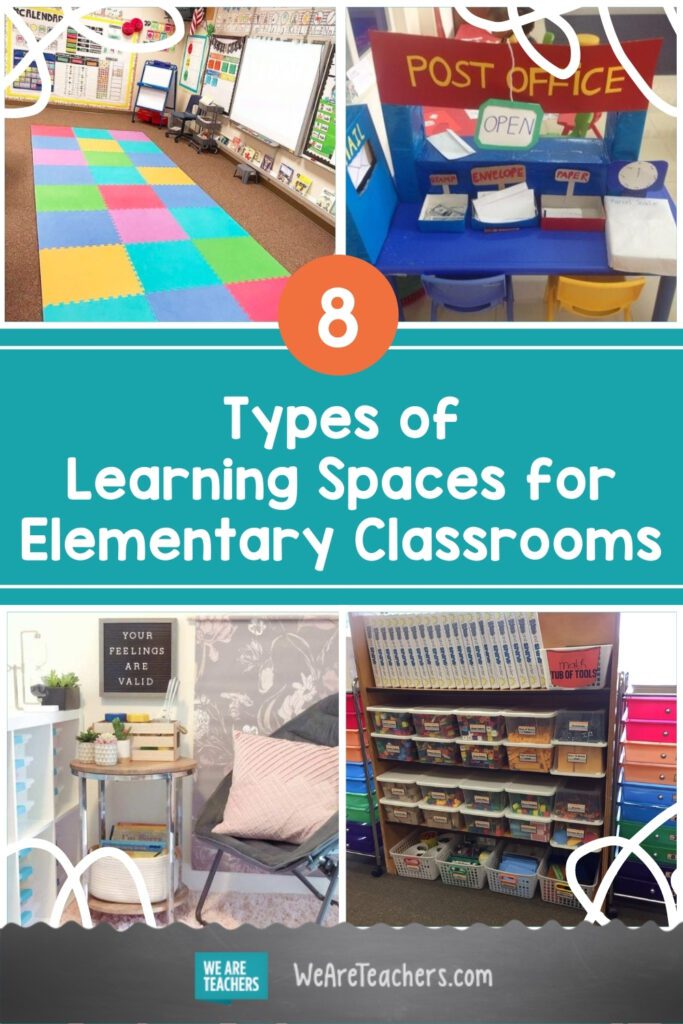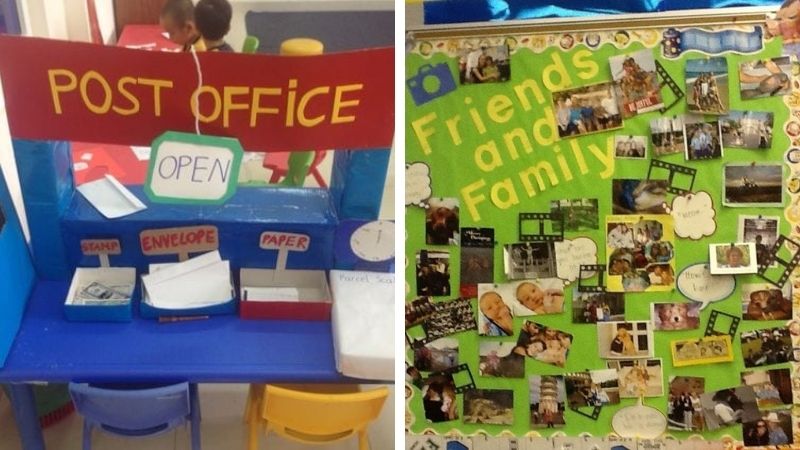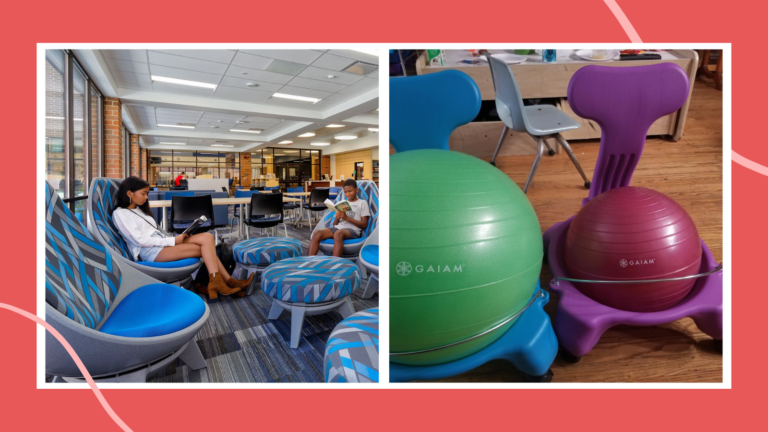Right now we know many of you are arranging your classroom spaces. The goal is creating a learner-centered environment focusing on our students and their learning needs. The learning spaces in the classroom are intentional and each one serves a purpose. For example, we want a classroom space that builds community. We also want a space that encourages collaboration and creation. Finally, we desire learning spaces supporting the development of mathematical practices and literacy skills.
There are a lot of decisions to make as teachers prepare for the return of school. So many things take place behind the scenes and before learners arrive. Take a deep breath. We’ve done some of the work for you. If you are new to the teaching profession or a seasoned teacher looking to switch things up a bit, we’ve got you covered. Here are eight classroom learning spaces to consider incorporating into your classroom design. It doesn’t have to be done all at once either. Start with one learning space at a time. Your classroom learning spaces are a work in progress. Just like your students, they will continue to evolve throughout the school year.
1. A classroom meeting space
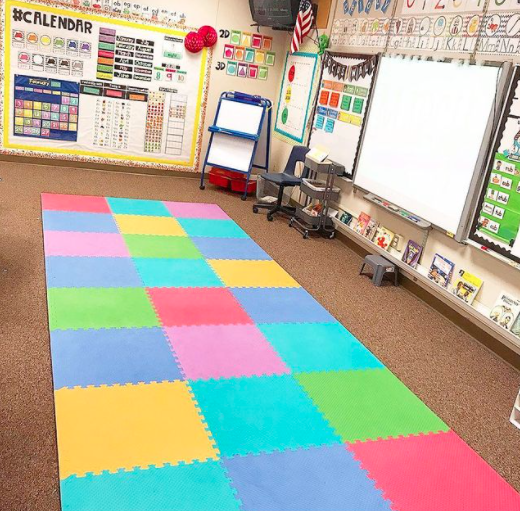
The classroom meeting area is the learning space where we join together as a class. In this space, we build relationships and create a community of learners. We hold our morning meetings in this learning space. In addition, it’s where we are teaching whole-group lessons, and sharing books with our students during read-aloud time. Many elementary teachers use a bright and colorful rug to anchor this space. (See our picks for classroom rugs here.)
Source: @itsallgoodwithmisshood
2. A classroom library space
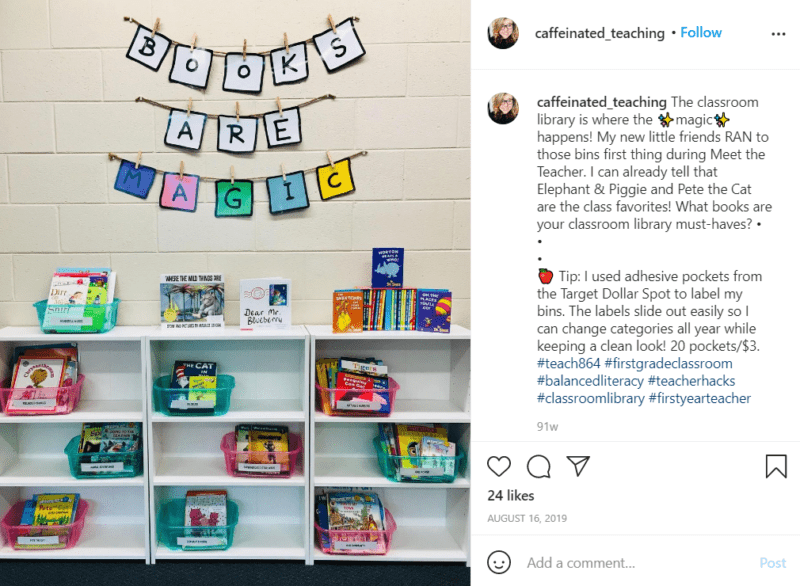
When I think of the classroom library, I picture a space with lots and lots of books, a large rug, cozy pillows, and readers! It’s a classroom learning space where students are selecting books to read, finding a comfy spot, and getting lost in their books as they become joyful readers. Be sure to channel Barnes and Noble as you create the perfect classroom library for your readers. ( Check out all our classroom library ideas !)
Source: @caffeinated_teaching
3. A writing center space
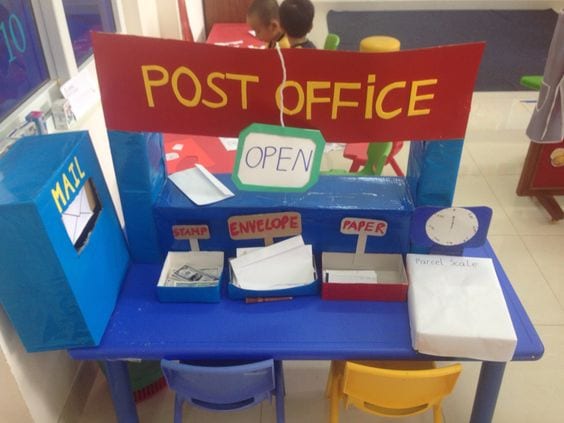
The writing center is a welcoming space for supporting the important writing your students are doing. This is the place where students find the writing tools they need for drafting and publishing writing pieces. For example, utilizing a small table, repurposing a shelf, or using a portion of a counter are all perfect spaces for writing stations. Some of the writing tools that you’ll want to have in the writing center include lots of paper choices, pens, pencils, markers, staplers, and tape. Be sure to give your students a tour of the writing center prior to writing time. We love independent writers! (Check out our writing center ideas.)
Source: Busy Teacher
[contextly_auto_sidebar]
4. A safe space
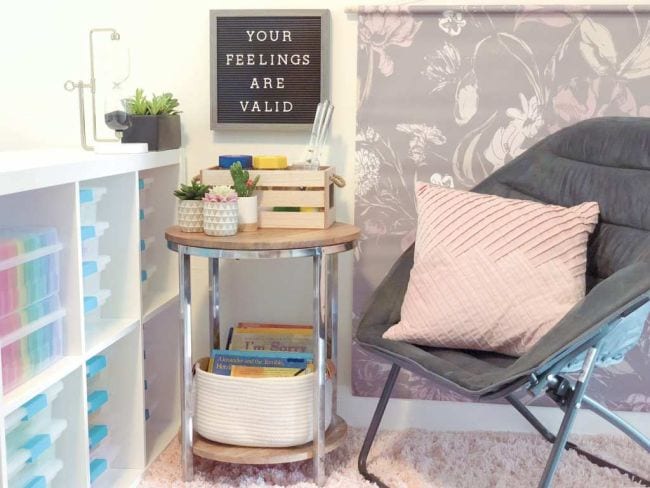
The safe space, aka the calm-down spot, is a classroom space where students go when they experience moods of sadness, anger, frustration, annoyance, and more. Supporting the social-emotional needs of our students helps our students succeed. Students choose to sit in the safe space when they need time to self-regulate and manage their emotions. In other words, this is a space where a student goes when they need a moment to themselves. (Check out everything you need to create a cozy calm down corner.)
Source: Teaching with Jillian Starr
5. A friends & family board
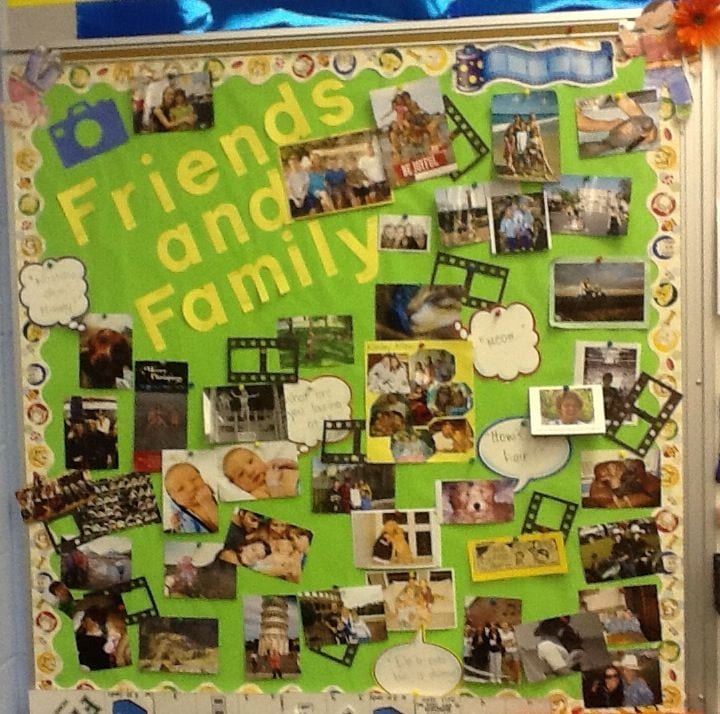
Building relationships and connecting with students helps them feel seen and valued. The Friends and Family board is a classroom space where you post pictures of your students’ friends and family, including their pets. For instance, this space can be a bulletin board, the inside of the classroom door, a classroom window, or elsewhere. Get creative! Do you have an odd space in your classroom that you would like to make more attractive? It might make the perfect spot or space for your Friends and Family board. If you’re teaching remotely, consider creating a virtual Friends and Family board using Padlet.
6. A collaboration space
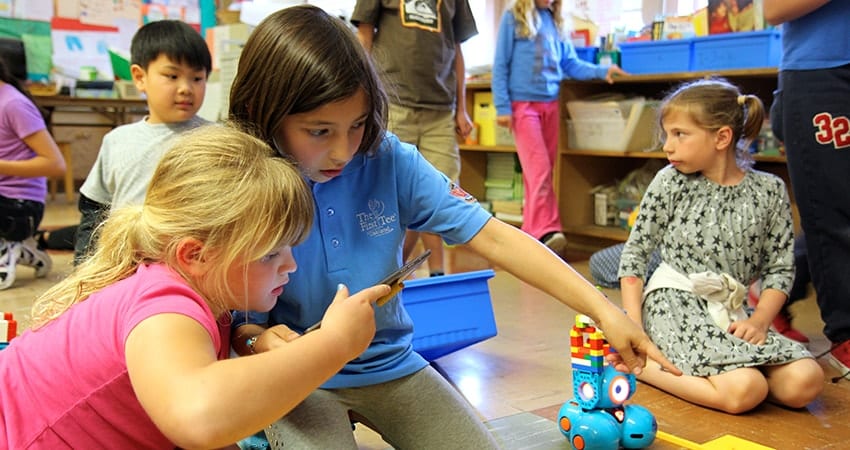
Providing the time and space for students to collaborate, solve problems, and work with peers is really important. In this classroom learning space, you might see small groups working with the teacher or students collaborating in groups and partnerships on topics and projects. But this space can look a number of ways depending on its purpose. For instance, it might be a horseshoe table if the teacher is working with a small group of readers. Alternatively, it could be a space on the floor where the teacher is pulling together a small math group. On the other hand, another group of learners might identify their own space in the classroom to collaborate on a project. It could also be two stools or cushions that students are moving from place to place for partnership work. Most importantly, this is a space where the options are endless!
7. A creation space
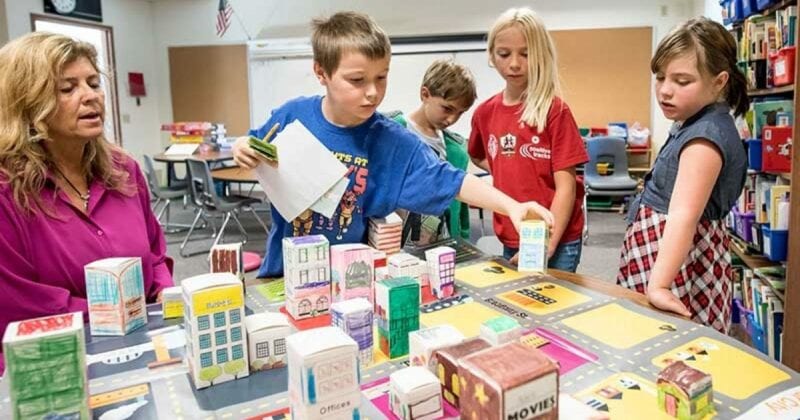
Many classrooms are making space for their students to participate in Maker Spaces, Genius Hour, and other Passion Projects. Setting up a classroom learning space for creation means that students need large table spaces or other large areas and a place to keep or store their projects until they work on them again. These are ongoing projects that take longer than one, 30-minute block of time. For example, counter space can be designated as temporary housing for projects in progress. Additionally, the tops of cubbies in the coatroom are often spaces no one thinks of using. Therefore, think out-of-the-box for this one! (Check out our ideas for Maker Spaces!)
8. A space for math tools
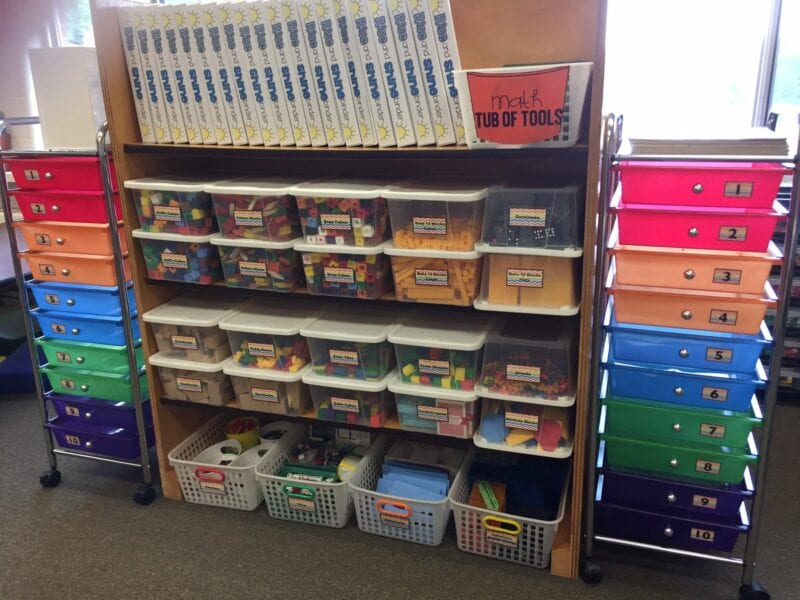
Classrooms need space and storage for housing math tools, and in the elementary classroom, learners are using all kinds of tools. Additionally, we want our young mathematicians to gather these tools with independence. Primary learners use number lines, dice, linking cubes, counters, and Base-Ten blocks. Older learners learn with rulers, calculators, 3-D Shapes, and more. Identify creative spaces and storage for collecting these items. For example, plastic tubs with lids are perfect for storing items in small classroom spaces and shelves work well, too. Be sure to consider rolling carts that can be moved from space to space when collecting and storing math tools. Consequently, when students know where to find these items, they can retrieve them independently and as they need them. (Fill your math tools with our favorite math supplies.)
What are the classroom learning spaces that you and your students can’t live without? We’d love to hear about them! Please share them in the comments below.
Looking for more ways to organize your classroom spaces? Check out these 15 Easy Solutions for Messy Classroom Spaces.
Be sure to subscribe to our newsletter for more great ideas!
